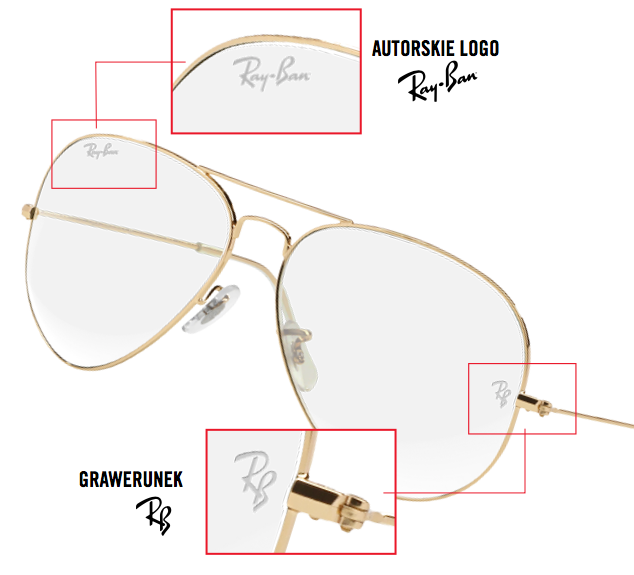Degrees of coloring and marking of lenses
 |
Sunglasses have different degrees of coloring. Starting from 0 to 4. In the Rayban brand such markings can be found on the left-hand temple of the model on the inside. Those are markings as: 1N, 2N, 3N, 4N oraz 1P, 2P, 3P, 4P. Letter "N" means a lens without polarisation, with letter "P" are polarized glasses. So what do the numbers mean? These are the degrees of coloring. Grade 0 and 1 are very bright, of course they protect us from UV rays, but they do not protect us from strong sunlight. Colour 2 and 3 is the most common in our part of the world, because such protection is calmly sufficient for everyday use. Color level 4 is intended for people who often travel to high mountains or often on snow, such lenses will already be too dark to drive a car. |
What is polarisation?
Polarization uses the effect of light propagation and organizes it in such a way that the image seen by the polarizing lens is clear. The light moves both vertically and horizontally. The rays of sunlight falling vertically make us see colors, shapes and images. Light running horizontally is responsible for streaks and reflections that dazzle us. Polarizing lenses counteract this effect.
The image we see through polarized lenses is sharper and more saturated with colours than with the "naked"; eye. This does not mean, however, that polarisation deceives the world we see. It is rather the fault of the tiny water molecules that float in the atmosphere and reflect the sun's rays in an unfavourable direction for us and make us see things as somewhat fuzzy and blurred. Wearing polarized glasses you will discover that the sky is a bit darker and the green is more juicy than you thought.
In short: polarized glasses remove unnecessary reflections, which are scattered light and transmit only simple, polarized light.
Polarized glasses have two tasks:
1. protect eyes from sunlight which reflect from horizontal objects such as e. g. the hood of a car,
2. They reduce glare and thus the elements in front of each other can be better.
Chromance lens and its properties
 |
This is a new and revolutionary lens technology that combines polarized protection with a stunning color enhancement effect. Completely changes the perception of color in the landscape. Thanks to the obscuring of excess light and lightness, they do not strain the eyesight. This allows you to wear them all day long. They surprise with their function of increasing the colour range in any environment and lighting conditions, even in the shade next to the building, thanks to the gentle yet strong protection provided by the overshadowing of the excess light. |
Evolve Lenses
|
They react to light and adapt to all conditions. Effect? Excellent visibility in all conditions of sunlight. UV400 filter provides almost complete eye protection (99%–100%). Evolve lenses are available in many colors. |
Photochromic Rayban lens
 |
Photochromes are a kind of prescription and sun glasses in one. Convenient solution for those who have to wear glasses all the time and spend a lot of time outdoors due to a visual impairment. The color of the lens in this type of glasses changes depending on the intensity of sunlight. The sharper the light, the darker the lens. In summer, on hot days, photochromes become almost as dark as sunglasses. Outdoors, of course. Photochromes are characteristic of plastic lenses, but do not work very well in combination with a glass lens. |
Prescription lenses for Rayban sunglasses and glasses
 |
Rayban glasses are engraved with the company logo on both lenses. Then we can be sure that we are dealing with authenticity. All lenses are created in the laboratory to provide maximum satisfaction from their use. |
Prescription glasses have a coating DST (Digital Surfacing Technology), it consists in sharp vision through the lens not only through the center of the lens but also through its periphery. It is used in single focus and progressive lenses.
Another premium anti-reflective coating with blue-light filter. It neutralises the blue light emitted by digital devices such as smartphones and tablets.
Prescription sun lenses may also have the polarisation that we have described in detail above.
